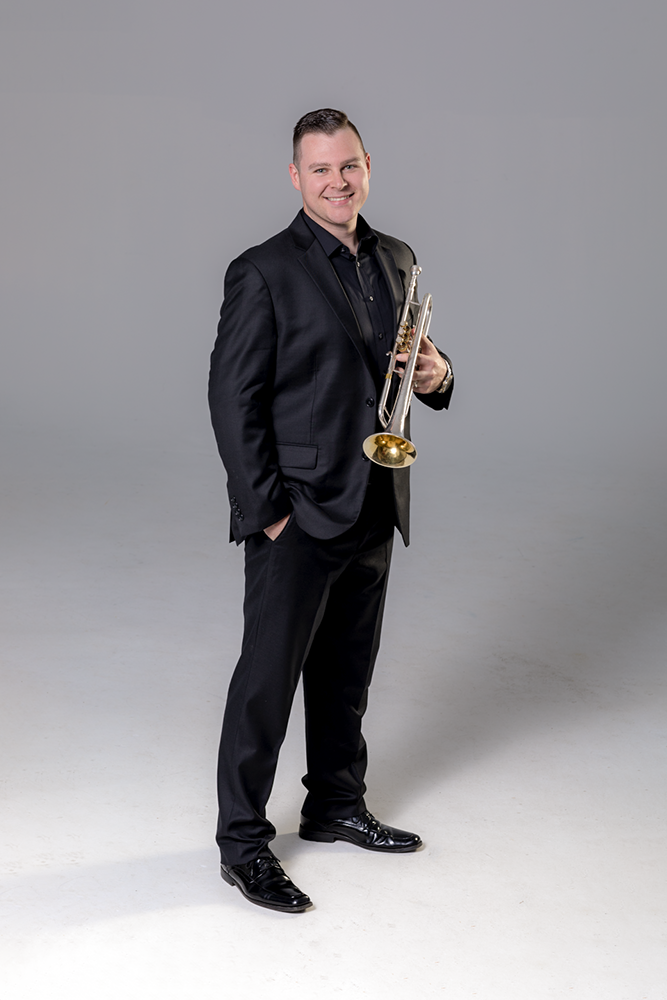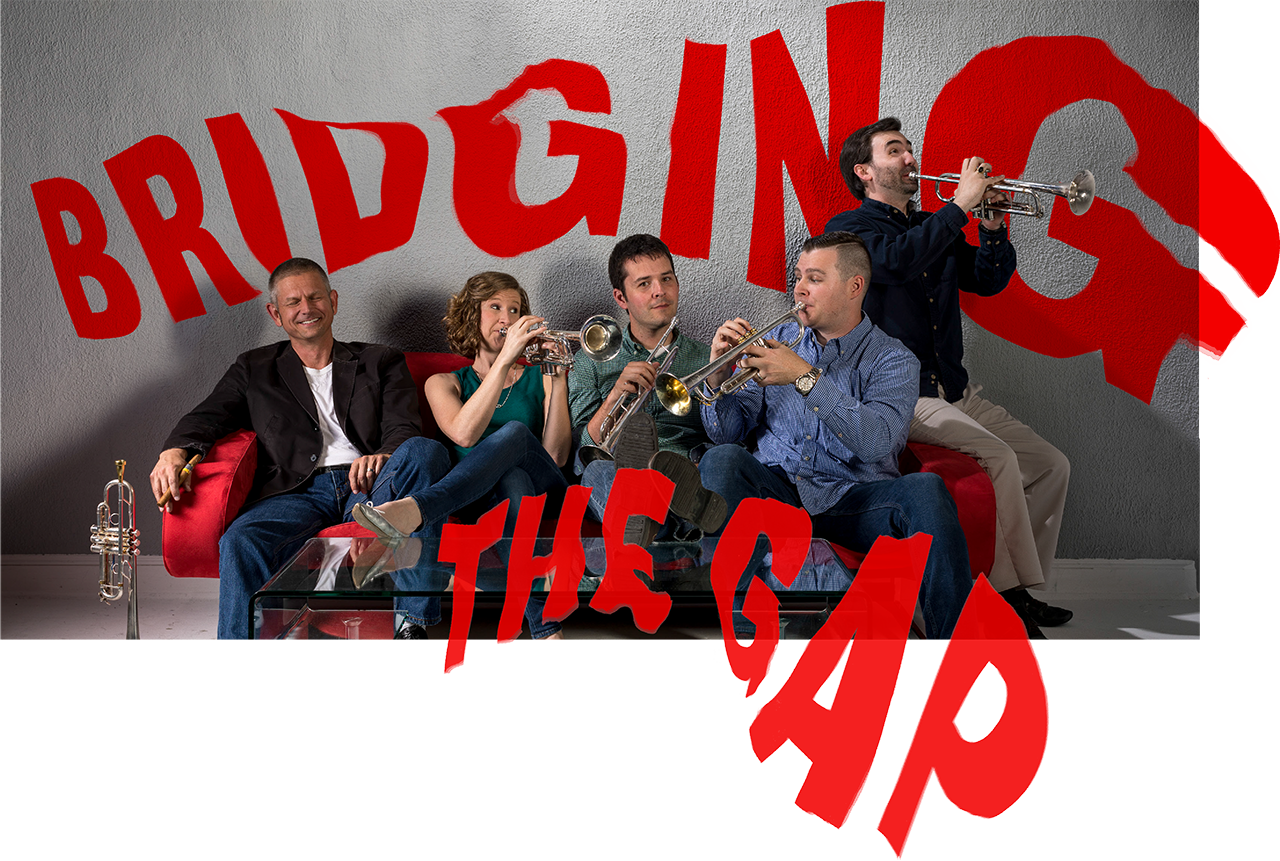Members of Fifth Bridge (left to right) Kelly Rossum (Christopher Newport University), Ashley Hall (Longy School of Music), Jason Crafton (Virginia Tech), Peyden Shelton (University of Utah), and Gabriel DiMartino (East Carolina University) (Photo: Amy Pearman)
WRITTEN BY JULIA LYON

(Photo: Amy Pearman)
What Peyden Shelton performs isn’t necessarily the music you expect. In fact, it’s often music no one’s ever heard at all — because it’s newly composed for a cutting-edge genre that integrates acoustic and electronic music in a kind of musical soundscape.
Shelton, an Assistant Professor of Trumpet at the University of Utah School of Music, hopes you give this electro-acoustic music a chance.
“Take several tastings,” he said. “Come back to it later — your taste buds evolve.”
As a member of the electro-acoustic trumpet quintet called Fifth Bridge, Shelton and his colleagues are helping build a repertoire for a whole new instrumentation: electro-acoustic trumpet ensemble.
In this style of music, the trumpet players’ acoustic music is integrated and manipulated with electronics while the composer’s electronic creation is played simultaneously.
Born in the middle of the last century, the electro-acoustic genre remains outside mainstream repertoire, but is expanding the musical language for both performers and listeners.
“It opens up a lot of doors for you — not only to include digital sounds from a computer — but you can be a little more creative with the performance space or include a visual performance,” Shelton said.
Fifth Bridge recently completed the groundbreaking project, “Big Data to Big Art,” an intersection of visual art, science, and music. The collaboration between NASA, the Harvard-Smithsonian Center for Astrophysics, and Grammy-nominated composer John Hollenbeck features a video of the sun’s activity in colors of light that can’t be seen by the human eye. Filmed by satellite-based telescopes, the video is accompanied by music performed by Fifth Bridge.
“It shows that the sun is not just a static, boring, yellow ball of light that we are used to. It shows there are masses of swirling gas larger than an entire planet, spinning like giant tornadoes and coming to rest,” said Henry Winter, an astrophysicist at the Center for Astrophysics, who believes art and science are not exclusionary.
He hopes “Big Data to Big Art,” which may be performed at different venues nationally over the next several years, will help make science more accessible.
“I think there’s far more that connects artists and scientists than separates them. A lot of scientific output is quantifiably beautiful and elegant,” he said. “I want people to know there’s so many things you can do in science and art — never feel like you have to sacrifice one for the other.”
As a musician who seeks out new music, Shelton has received funding through the University of Utah to commission four new trumpet concertos from young American composers, which he will eventually perform.

A College of Fine Arts grant also funded the creation of a new electro-acoustic trumpet chamber ensemble piece by contemporary composer David Sampson. Fifth Bridge, which is committed to playing new music exclusively, came together to premiere the work in March in a unique space known as The Cube. The venue, at an arts center on the Virginia Tech Campus, is known for its immersive, cutting-edge art experiences. With more than 1,000 speakers, it can manipulate the audience’s perception of what it hears.
“I think the appeal of Fifth Bridge is that it is simultaneously new and familiar, in other words a combination of instruments and sounds that they may have never heard together,” said Jason Crafton, one of the members of Fifth Bridge and an Assistant Professor of Trumpet at Virginia Tech. Members of the ensemble live in different parts of the country.
“Electronic music has no boundaries, so our concerts often span a huge breadth of musical aesthetics,” he said. “While I don't think audiences find our work shocking, they may be surprised by the palette of sounds we utilize.”
When he’s not playing groundbreaking repertoire, Shelton is a full-time trumpet professor teaching 15 students in his School of Music office, a room filled with mutes, mouthpieces, and photographs of trumpet players from the U.S. and around the world.
He wants to give students a better idea of who they’re hearing — of who they could become — and how to create their own excellence.
“I equate a lot of what I do to teaching a new language,” he said. ■













